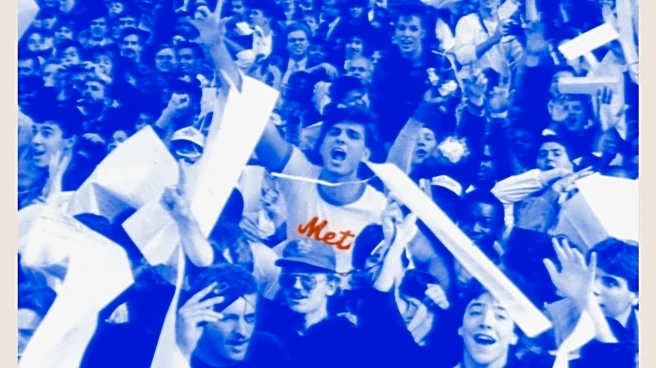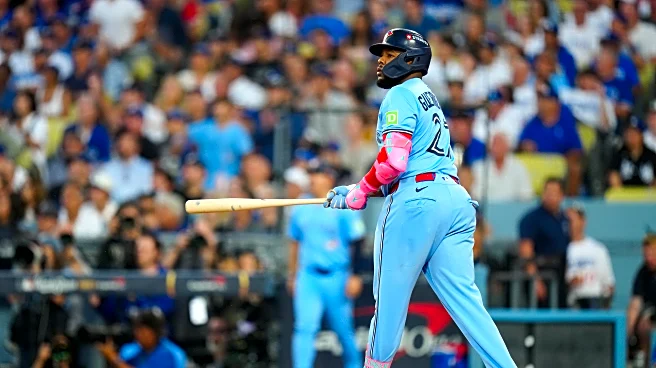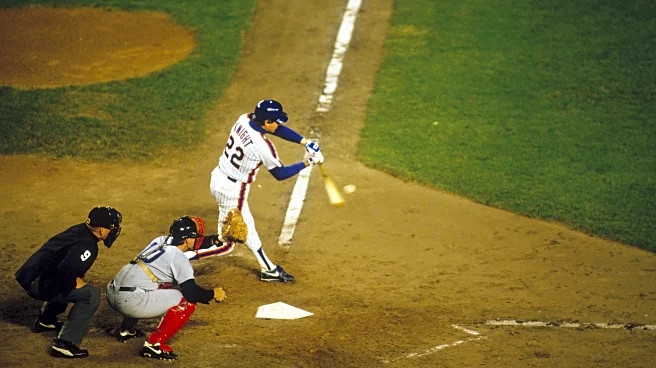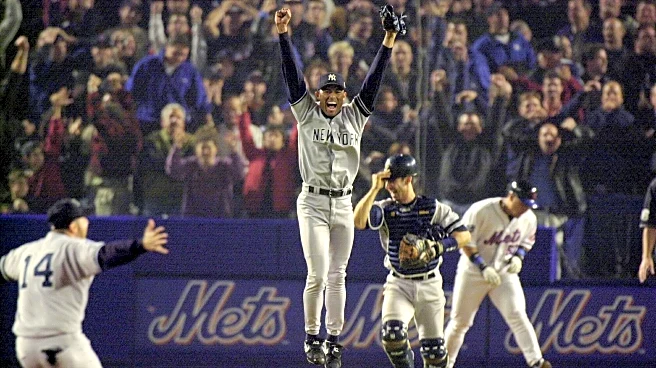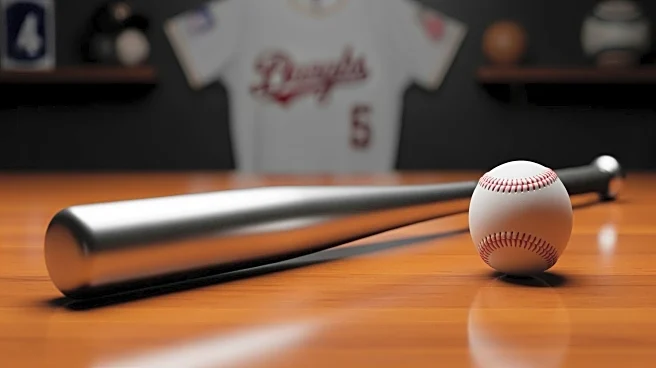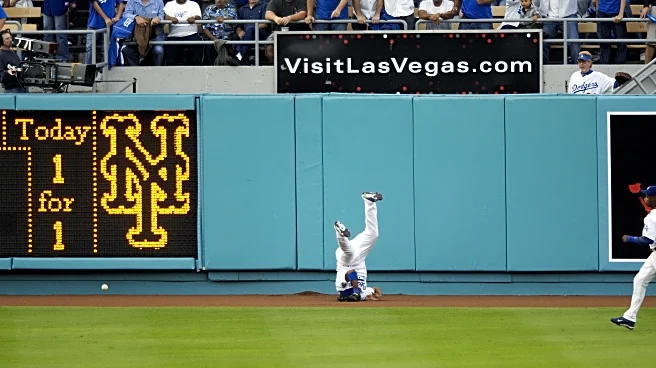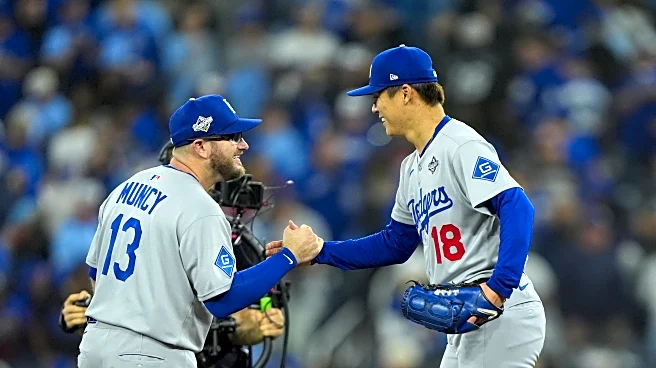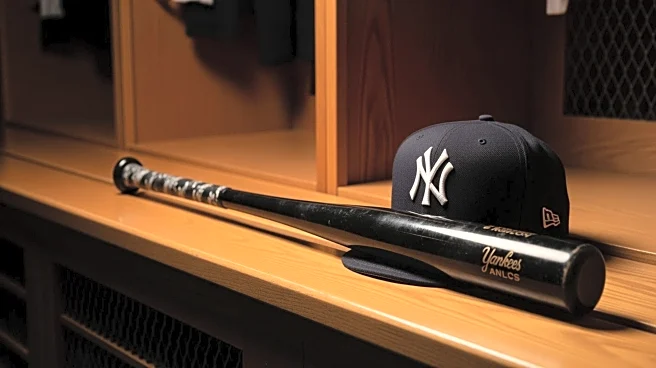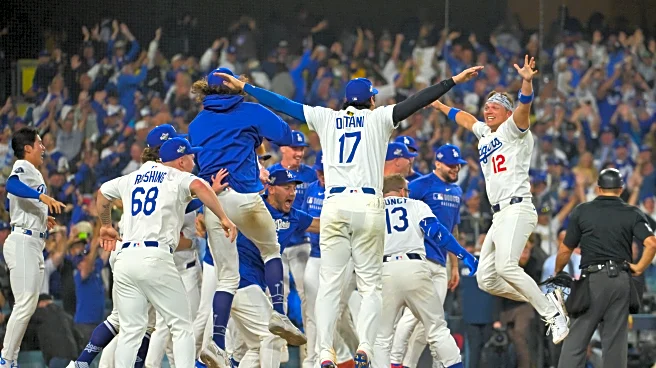In March 2026, Penguin Random House will release Metropolitans: New York Baseball, Class Struggle, and the People’s Team, a new book by A.M. Gittlitz (I Want to Believe: Posadism, UFOs and Apocalypse Communism,
Beyond Antifascism). The book is unlike any other Mets-related book we’ve seen; Gittlitz has gne deep into not just Mets history, but the societal context of the team’s founding , its early years, and all the subsequent eras of the team’s existence. It is a book that’s not just for baseball fans, but for anyone with an interest in late 20th century New York or American sports culture.
We got a chance to chat briefly with Gittlitz about the book and the Mets. We’re also happy to exclusively reveal the cover to the book, shown below. Make sure to pre-order the book or pick it up when it comes out on March 31.

The Mets have always been the scrappy underdog team of New York and, to some degree, all of Major League Baseball. How much of that do you think is intrinsic to the team versus being a byproduct of being in the shadow of “America’s Team,” the Yankees? Would they still be the little brother of baseball without such a local big brother?
A.M. Gittlitz: Years before they even existed, the Mets have always been something of a spite team against the Yankees. The history goes back to Yankees’ owner Dale Webb trying to prevent the creation of a new NL team in New York after the Dodgers and Giants left in 1957. I found telegrams from him in the NYC Municipal Archives leading lobbying efforts for Mayor Wagner to build new parking for Yankee Stadium instead of a municipal stadium in Flushing.
The rivalry heated up with the hiring of George Weiss as the Mets’ first president, and Casey Stengel as their first manager. Both were recently fired from the Yankees after winning ten pennants and seven championships in twelve years, and Casey boasted in the press about the Yankees being doomed without him. Mets marketers played up the grudge match ahead of their first spring season confrontation in 1962, a game in which the confused and uninterested Yankees’ b-squad witnessed the birth of the first Mets fans ironically cheering on the determination of Stengel with the first ever chant of “Let’s Go [team]” sports chant.
The New York literati loved the narrative of a revanchist “National League Town,” evoking nostalgia for the blue-collar Dodgers’ and golden-era Giants’ annual battles for the NL pennant and October Subway Series against the conservative high-society snobs. The next year, a mid-season “Mayor’s Trophy” exhibition match between the teams at Yankee Stadium was truly like the New Breed Mets fans’ world series, because they knew it would be a long time before such a thing would be possible. An improvised a marching song written after their win (by Lindsay Nelson), to the tune of “John Brown’s Body” went: These eyes have seen the glory of the Yankees in defeat / They ain’t even champions of 157th Street / Glory, glory, Casey Stengel / Our Mets go marching on.
Between then and inter-league play in the nineties, the rivalry was little more than theoretical. The two teams traded the spotlight more or less politely, without any real dream of a Subway Series. The climactic moment came and went in 2000, and the rivalry has been far more polite since then. It seems agreeable for both fanbases for the Yankees to be alpha dogs to the Mets’ betas. Of course, Steve Cohen is trying to flip the script, but I argue in the book if he were truly successful, the Mets would become something unrecognizable, like a gritty Peanuts reboot in which Charlie Brown reappears as a star-punting varsity jock.
The Mets and Queens have always seemed like a match made in heaven. How does the outer boro reflect the club and vice versa?
A.M. Gittlitz: We can attribute this purely to Robert Moses. Since the 1920s, he had seen Flushing as the keystone to a city rebuilt to decentralize the Manhattan cosmopolis into the suburban metropolitan expanse. He understood an entertainment zone would help secure funding to clear out the “Valley of Ashes” and the chop shops made famous in The Great Gatsby, but never liked professional sports, and never envisioned a baseball team serving this vision.
That was until 1957. The deindustrialization and white flight of the fifties gutted baseball’s traditional neighborhoods and expanded population towards Long Island. New Deal funds for slum clearance had dried up, and angry letters flooded City Hall decrying the Dodgers and Giants’ departure. Moses realized then that creating a new National League ball club in Flushing, between urban blight and suburban sprawl, could help him get the bonds he needed to finish his masterwork of a new “true Central Park,” modeled on Copenhagen’s Tivoli Gardens, a nineteenth-century funfair funded by the Danish king for its architect’s promise that “when the people are amusing themselves, they do not think about politics.”
Moses backed Branch Rickey’s Continental League as a Trojan Horse in the effort. His time-tested strategy of unleashing popular support, now via the National League Town, bent the bureaucracy to his will. Bonds were issued to start construction on the Flushing Municipal Stadium in a moment economist Roger Noll described as the beginning of a major shift in the sports business, “from a world in which teams owned and built their own stadiums to a world in which all stadiums were subsidized.”
But in true Metsian fashion, Moses’s broader plan fell apart. Anti-racist protests and budget shortfalls for the ‘64 World’s Fair sank Moses’s entire career into infamy. Instead of Robert Moses Park, we got Flushing Meadows Corona Park. During warm weekends it remains undoubtedly the liveliest in the city. Speak to nearly anyone in any Latin American country and they will tell you of a relative in Queens who, perhaps won over to Omar Minaya and Pedro Martinez’s Los Mets in the mid-2000s, can likely be found playing soccer, eating street food from a stall, or dancing to a live band on a Saturday afternoon on its vast lawns amidst a blue smattering of Mets caps. Like the seats of Shea in the sixties, it is diverse, defiant, and self-organized— with more in common with the integrated vision of the Civil Rights Movement and New Left than the orderly, white respectability envisioned by Robert Moses or George Weiss.
Joan Payson is an incredibly important person in the history of not just the Mets, but of female involvement in baseball overall. What is a favorite Payson quality or anecdote you can share with our readers?
A.M. Gittlitz: I was very struck by Payson’s original pastoral vision of the team as the “Meadowlarks,” dressed in pink and black. The businessmen behind the team would have nothing of it, preferring nostalgic urban imagery. Payson continued to weigh in on essential branding characteristics, however, including choosing the powerful “Meet the Mets” team anthem that evoked the populist campaigns of Al Smith, and a comic book aesthetic that I theorize she connected to the emerging trend of pop-art that merged high and low culture.
Her most important contribution from then on would be serving as a matronly guarantor of a family atmosphere in the clubhouse. After she died in 1975, her stockbroker, M. Donald Grant, definitively killed this vibe, sending the franchise into the dark era known as “Grant’s Tomb.” While she had been rarely known for making significant roster decisions (aside from acquisitions of Elio Chacon, Gil Hodges as manager, and Willie Mays), the rapid turnaround showed how essential “Ma Payson” was to that essential element of communal team spirit.
The early Mets had an outsized amount of participation in Civil Rights issues during the 1960s. Why do you think the Mets were a team willing to take a stand when so many others did not?
A.M. Gittlitz: The easiest answer is probably that they were the youngest team in baseball, with a fanbase to match. Stengel even called the team’s prospects the “Youth of America,” an allusion to John F. Kennedy’s term for the baby boomers he hoped to bring into civil society.
Marvin Miller, the first militant president of the Major League Baseball Players’ Union, likewise theorized the players who came of age idolizing Robinson and Mays might share similar cynicism toward the conservative style of workplace management as much of America’s young working class. The result of this was that Black players throughout baseball became a political force in the mid-sixties, including Mets Cleon Jones and Donn Clendenon, helping to clear the way for their white coworkers like Rusty Staub, Tug McGraw, and Tom Seaver to stand in solidarity with them during their boycott games played before the funerals of Dr. Martin Luther King Jr. and Robert F. Kennedy in 1968, and took a stand against the Vietnam War in 1969. As a direct result, Tom Seaver’s public antiwar declaration before the 1969 World Series was probably the most dramatic political statement ever made by a white athlete before, or since: “If the Mets can win the World Series, then we can get out of Vietnam.” Just imagine a player saying something like this today about Gaza or Venezuela!
In the promotional copy, you mention the chokes. 2025 is yet another year that will be defined by the Mets blowing what seemed to be a surefire playoff spot. Of all the meltdowns you researched, wrote about, or experienced first hand, which one stings the most?
A.M. Gittlitz: The 2000 Subway Series loss was decisive enough that it wasn’t really considered a choke, but I was always fascinated by how the entire series turned on something that was not a play: Piazza’s failure to charge Clemens after the bat-throwing incident in game 2. It was somehow clear to me when he grounded out afterwards, the Subway Series, and that glorious, black-clad era of Mets history, was over.
The string of chokes since then (2006, 2007, 2008, 2016, 2022, and now, 2025) seemed to follow the trend. The Mets are a team that needs to understand what they are fighting for in order to actually fight. The book concludes with a theory about how this played out in 2024 and 2025 in the context of Kamala Harris’s failed “Choose Joy” presidential campaign.
It’s obvious that Tom Seaver and, to a lesser extent, Mike Piazza, David Wright, and Francisco Lindor, all represented the club as the spotlight or franchise player while they were Mets. But who is the most Metsian Met of all time? Who embodies all the parts of the Mets experience most perfectly?
A.M. Gittlitz: The first name that comes to mind is Tug McGraw. His autobiography “Screwball” is a remarkable sketch of the socio-political neurosis of playing in the late sixties and early seventies for a team with a fanbase beloved across the political spectrum.
McGraw was a soldier, a patriot, a celebrity, but he was also a worker and antiwar, and he identified broadly with the people— both those fighting and dying for peace, and the silent majority that supported the senseless war’s expansion. American sports had always been conceived of as a therapeutic distraction to politics, and McGraw wrote that taking the mound had previously been his sole comfort, but after the Kent State massacre, in which New Breed Mets fan Jeffrey Glenn Miller was among the dead, the dynamic reversed. He wrote in his diary that night: “I really don’t know in which direction to head or what to do. Why? Because I’m a people and I’m screwed up.” The team discussed boycotting their game after Kent State, ultimately deciding not to.
Three seasons later, in 1973, the left was in full collapse, and the Mets and McGraw continued to struggle. This is when the greatest Mets slogan was born: I Want to Believe. It was the revival of the sixties’ spirit of ironic hope in the face of hopelessness, updated for a decade in which yoga, self-help, and parapsychology grifts like the Rajneeshees, EST, and Scientology rapidly seized the terrain abandoned by the revolutionary movement. Most fans took it to mean believing in the Mets as they went from worst to first that year, eventually taking the NL pennant, but in the context of “Screwball” its clear it was about much more than baseball.
And I’d like to give an honorable mention to Dominic Smith. He will never be remembered as an all-time Met, but I would argue he should be for organizing the walkout after the Kenosha shootings during his career-best 2020 season. I was moved to see the protest had been seemingly immortalized in the Citi Field museum two years later. But the exhibit disappeared in 2023, and the museum shortly after. Worrying moments like that would be forgotten or marginalized is one of the main reasons I wanted to write this book.
